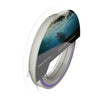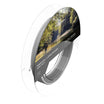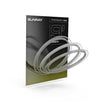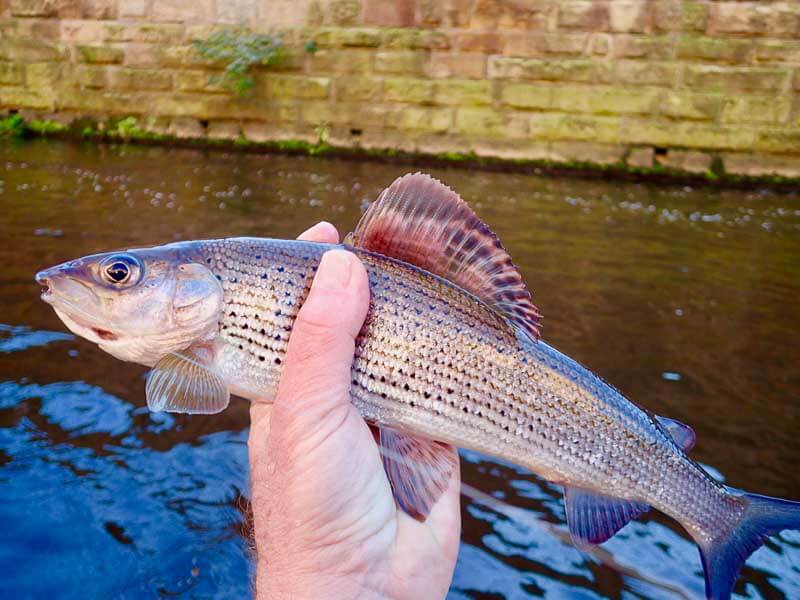Article by David Southall
It constantly amazes me how many fly fishers will spend vast amounts of money on top end fly rods & the latest fly lines, both of which are reputed to dramatically improve your casting, yet they have little idea of even the basic dynamics of fly casting. They then blame the tackle for their poor performance. A good caster can adapt to virtually any reasonable rod & line combination, although there is no doubting the fact that well designed rods & lines, like those that Tom Bell & Sunray sell, can give a distinct advantage to those folks who know how to cast.
Let me say at this stage that I do not consider myself to be an expert caster. I still have a lot to learn. However, thanks to watching experts, receiving advice from friends who are experts & attending a course in Italy with Massimo Magliocco (a top Italian caster) during which I became a Basic Level Instructor in the Italian Casting Style I have become reasonably proficient with regard to a range of casting skills. For me casting is a means to an end, not an end in itself. I have friends for whom casting is the most important part of fly fishing & some even consider that techniques like Tenkara & Euro-nymphing are not fly fishing as they don’t, in their opinion, involve casting skills. Some are only really interested in distance casting, whilst for me casting much beyond about 30’/10 metres is getting into the zone of inefficient fishing with regard to casting accuracy & presentation. I am a fly fisherman not a fly caster! It is possible for an angler with good ‘river craft’ to catch plenty of fish despite being a relatively mediocre caster but there are many situations where fish will not be caught without the required techniques at hand.
What are the main casting faults that I see when watching other folks cast?
- Probably the most obvious is poor rod tracking. Many folks sweep the rod tip in an arc during casting which creates a wide, open casting loop with little energy directed towards the target. The fly line creates ‘Micky Mouse Ears’. The main cause of this is casting with wrist movement only. The amount that the wrist flexes needs to be carefully controlled (see Tom’s video on casting with soft rods). A secondary cause is sweeping the arm in an arc, particularly towards the end of the casting stroke. The line will do what the rod tip does; so if you want a good cast tracking the rod tip in a straight line, with the exception of a slight deviation that generates the loop size, is important. Good/straight tracking also facilitates the accurate casts that are essential when casting a dry fly to rising fish if optimum success is to be achieved. The Italian Casters say that in their style that involves a long casting stroke “the hand must move along the wall”, meaning in a perfectly straight line towards the target.
- The second most obvious fault is accelerating the rod tip hard at the start of the casting stroke, then slowing down which unloads the rod, reducing final line speed. The casting stroke should involve a smooth acceleration with a distinct increase/tap/thrust towards the end of the stroke. Snatching the rod forward at the start or any uneven/jerky acceleration is likely to make the rod tip drop below its straight-line path causing a tailing loop which causes the fly to catch on the line or leader & can result in knots forming in the leader or tippet.
- A third fault is putting far too much effort/power into the casting stroke. Good rods, when balanced with a suitable weight of line, are designed to do most of the work for you. If you can hear the rod ‘swoosh’ when you cast you are trying too hard. Furthermore long casts shouldn’t involve more effort, as the increased weight of a long line outside the rod tip will load the rod deeper, thus storing more energy. The only real difference between casting at short range & long range is that long range casting will require a longer casting stroke to ensure any slack in the line is taken up & so that the rod is fully loaded/flexed.
The river fly fisher in particular needs to have a range of casts in his or her repertoire. Here are some of them with a brief explanation.
- The standard Overhead Cast is probably the least useful, although it is the basis of many of the other casts. It involves a relatively short casting stroke with distinct stops at the end of the back-cast & forward-cast. In the back-cast the hand is moved in a straight line from waist-level (with the rod horizontal) to about eye-level with the rod sloping slightly back of vertical (1 o’clock position). The forward-cast is similar to throwing a dart as the hand is moved forwards in a straight line towards the target with a distinct acceleration (slight wrist snap) at the end, however unlike throwing a dart the hand is not opened but the grip should be softened at the distinct ‘stop’ at the end of the stroke to reduce tip bounce.


- The standard Side Cast is just the overhead-cast transferred to a horizontal position. It is useful for casting under tree cover or casting under the wind, although there are better casts for doing this job, particularly the Italian Style Totally Under the Tip Cast (too complex to easily describe in words) or the Underhand Oval/Belgium Cast.
- The Oval or Belgium Cast in which the rod is moved in a continuous arc with no stop on the back-cast that keeps the line under tension ensures that the trajectory of the back-cast & forward-cast are not in the same vertical or horizontal plane. It is very useful when casting teams of flies, heavy nymphs or big lures since it avoids tailing loops, prevents flies hitting the rod & avoids the problems of poor timing the transition from back-cast to forward cast that can crack-off heavy flies. Furthermore the line never fully extends during the back-cast so it reduces the risk of catching vegetation behind the angler. The tightness of the loop can be controlled by how wide the casting arc is (willow-leaf shaped arc = tight loop, whilst more open arc = open loop)
Rod tip for a tight loop

Rod tip for an open loop

- In the Roll Cast the rod is slowly drawn back at an angle behind the angler & the line is allowed to briefly sag (in a D loop); then the rod is driven forward. This is a great cast when there are obstructions immediately behind the angler. However it is not a long-distance cast.
- The Roll-Dump Cast is the same as the roll cast except for the fact that the rod tip is driven sharply downwards during the forward stroke creating plenty of slack in line & leader to delay drag in awkward flow such as when casting into a slack far-bank pocket.
- The Snake Roll Cast (see You Tube link below) is not only useful when there are obstructions close behind the angler but is great when one needs to redirect the cast, for example when fishing a long drift across & downstream, when swinging flies down & across stream & when covering cruising fish.
- The Reach Cast in which the rod tip is swept to the side as spare line is released during the cast helps to delay drag & avoids mending the line immediately after the line has landed. It creates an upstream or downstream curve in the line
- Curve Casts also generate curves in the line either to delay drag or cast around obstructions. They can be achieved by either overpowering a side cast & ending with a sharp stop or under-powering a side cast with a soft stop.
- The Wiggle Cast in which the rod tip is wiggled from side to side as spare line is released puts slack into the line thus delaying drag.
- The Dump or Pile Cast in which the cast is aimed high with a soft stop & an immediate lowering of the rod tip puts plenty of slack into the line & leader. The Italian Slowed Down Angular/Dump Cast is even better as it only puts the slack into the leader & holds the main line off the fast water for as long as possible.
This is by no means a comprehensive coverage of all the possible technical casts that can be useful in a range of situations but it gives some idea of what is required to have some of the casting skills required to effectively fish for trout & grayling in rivers.
































